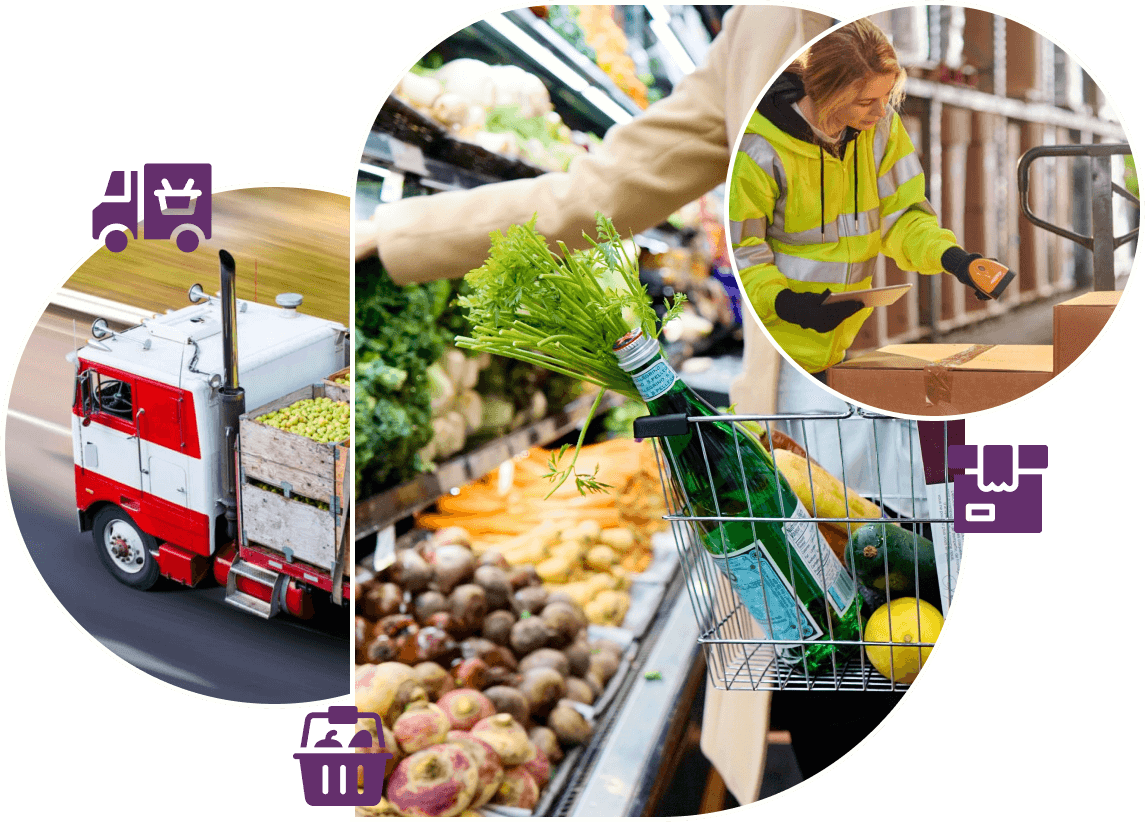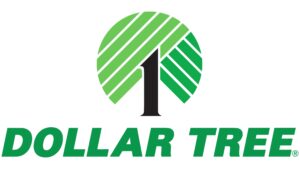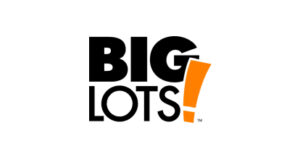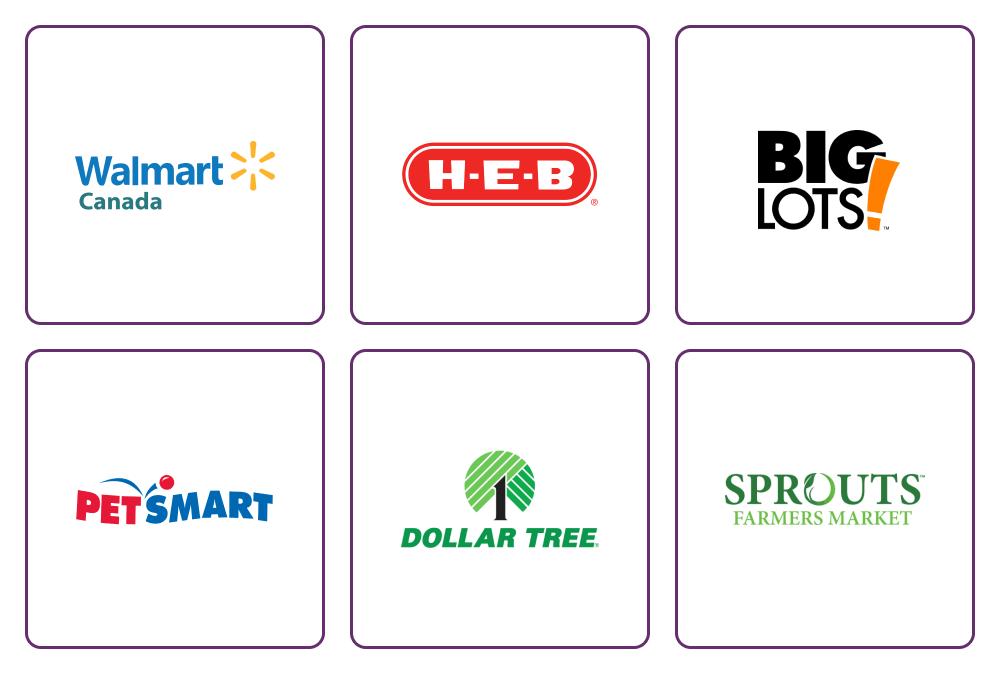In today’s fast-paced grocery industry, supply chain challenges are becoming more complex than ever before. Grocery stores need to keep up with increasing demand and changing customer preferences while managing their inventory, transportation, and logistics efficiently.
Let’s take a look at the biggest challenges that grocery supply chains are facing – and the secret to solving them all.

Grocery Supply Chain Challenges
Grocery & Speciality Food stores face very unique challenges that are the source of many supply chain complications – and daily headaches for supply chain leaders.
- Complex Inventory Management: With mixed shelf life of perishable and non-perishable goods, managing to avoid stock outs and food waste is always a challenge.
- Multiple Delivery Channels: With front-of-store, back-of-store and direct-store deliveries coming in, coordinating these different channels can be complex and require additional resources.
- Labor Challenges: Between labor shortages, high turnover, and keeping multiple delivery points staffed labor challenges don’t seem to end.
Not to mention Quality Control, Demand Forecasting, and Supplier Management and now, grocery supply chains need to deal with inflation and fickle consumers – with labor challenges being the biggest concern for most in 2023.
executives surveyed said labor was the number one challenge heading into 2023*
Almost all retail executives expect inflation to pressure their profit margins. They’re also predicting hard times for consumers, with nearly all anticipating diminished consumption in 2023, resulting from rising financial concerns.*
*Deloitte 2023 Retail Industry Outlook
Visibility is important to our supply chain. With 15,000 stores nationwide, getting deliveries at least once a week in a multi-stop, truck-dedicated environment means that Truck Day can be the worst day in a store. And knowing when that truck is coming, being able to plan resources the best they can, and plan that labor in a limited environment is very important for our stores.
– Chris Bauman,
Director, Outbound Transportation at Dollar Tree Stores

We’ve improved our on-time delivery by 20% over the last year. That’s really improved our store productivity for the associates on the unload team. Now our associates are able to track the delivery through FourKites with proactive notifications, so they’re able to redeploy that labor and utilize it in other areas of the store in case a truck is late.
– Kory Shinlever,
Director, Domestic Transportation at Big Lots

How to Face These Challenges
These problems are not insurmountable – there’s one simple secret that can help with all of them and create a positive impact for your entire grocery supply chain.
Here’s the secret: having the right insights, at the right time, in the hands of the right people.
You’re probably thinking “that’s a lot easier said than done!” but actually that’s exactly what Supply Chain Visibility can give you.
Imagine how highly accurate shipment ETAs at the PO and SKU level could help you:
- Improve labor planning and scheduling
- Reduce out-of-stocks and overstocks
- Minimize store congestion
But the benefits don’t stop there…
3 Ways Visibility Can Improve Your Bottom Line
End-to-end visibility is more than track-and-trace – for retailers it means more workforce efficiency and reductions in safety stock or spoilage. These, in turn, translate to cost savings in labor, transportation and fees; increased customer satisfaction due to product availability; and revenue growth due to happy customers and more efficient supply chains.
- Transportation planning – Reduce planned transportation spend by aggregating performance data across all shipments and comparing it to service-level expectations.
- Storage & asset utilization – Minimize dwell time of fleet assets as they move in-and-out of a facility.
- Improve out-of-stocks – Stop worrying about that delayed inbound shipment when inventory is not even close to a minimum threshold – prioritize the “at risk” inbound shipment that could result in an inventory stockout.
- Free up labor to focus on customer service – Accurate predictive ETAs and historical delivery patterns help you know exactly when employees are needed for unloading and stocking.
- Cash flow – Visibility can help better manage inventory levels, optimize production and lead times, and negotiate better payment terms – all of which will improve cash flow, giving you more opportunities to invest in marketing and loyalty programs.
- Scalability – Without the right data and historical benchmarks, it’s nearly impossible to optimize your operations. And with the cost of capital higher than it’s been in a long time, it’s harder than ever to scale an inefficient business.
Retailers Use FourKites to Solve Their Problems and Save Big
Labour costs saved annually at DCs
One large national retailer has reduced safety stock by 15% thanks to inbound visibility from FourKites
Fewer emails asking “Where’s my truck?”
Average time saved each month per customer leveraging FourKites for track and trace
See How FourKites Can Impact Your Operation – Schedule a Demo
The World’s Biggest Brands Trust FourKites
